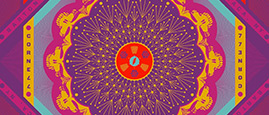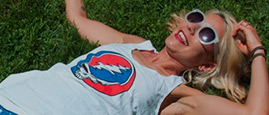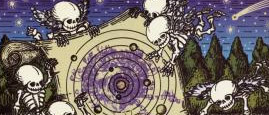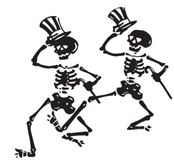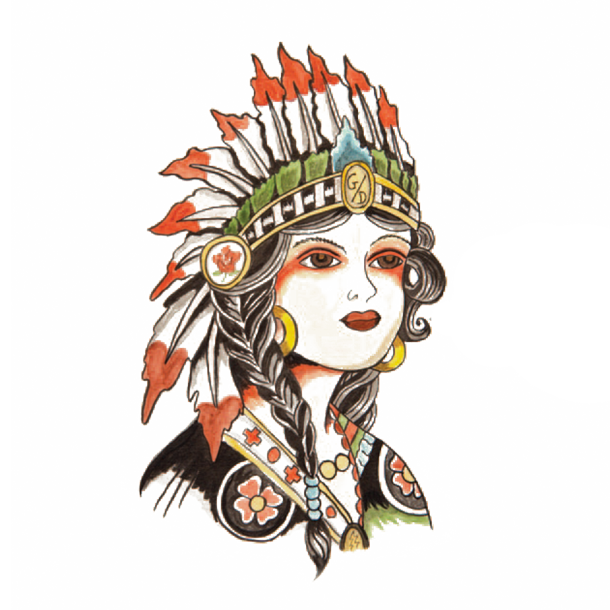
Wes Lang's Indian Girl.
Wes Lang’s evocation of a Native American take on the Grateful Dead’s iconography for the Spring 1990 boxed set has deep roots in the Dead’s milieu. A fascination with all things Indian was a big part of the Haight-Ashbury, and the Dead were no exception. Band members were as intrigued with Native American heritage as they were with the Anglo side of Americana and the West, which can be seen in photographs, posters, and other artifacts in the Grateful Dead Archive at UC Santa Cruz.
Some aspects of the band’s association with Native Americans were even closer to home. In 1969, Native Americans occupied Alcatraz Island in the San Francisco Bay in an historic bid to raise awareness of a variety of social and political issues; and over the years, the Dead supported Native American charitable organizations and invited Native American groups to perform as opening acts as well.
Probably the most famous link between the Dead and Native Americans was their friendship with Rolling Thunder, “an authentic healer and a fascinating character,” as Dennis McNally put it, who inspired Mickey in particular—see Hart’s album of the same name, which features an invocation by Rolling Thunder. But RT, as he was affectionately dubbed, was a friend to the whole band, someone to whom Weir turned for help when an apparition spooked both him and his dog on a songwriting trip to Wyoming.
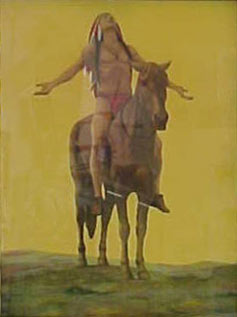
NC Wyeth's Indian illustration.
Native Americans also haunt the periphery of the Dead’s world, just as they do the broader cultural context that frames America in all its complexity, like the NC Wyeth illustration of an Indian stretching out his hands that inspired Weir to remark to Barlow, “Looks like rain,” which became the title of the song they were writing. And most fans can think of several iconic posters advertising Dead shows that feature Native American motifs and themes, such as Bill Graham dressed in complete warrior regalia for the Dead’s New Year’s 1990 poster.
Similar trappings have been a part of Deadhead style since its genesis in the Haight-Ashbury, but some fans have had deeper commitments to Native American causes. One group, called the Grateful Dead Indians, handed out flyers at Dead shows in the ’90s, a gesture that captured the imagination of Yale historian Philip J. Deloria, who wrote about them in his book Playing Indian. Most recently, Grateful Dead Scholars Caucus presenter Jeremy Vaughan gave a paper at last year’s conference called “‘Indians Are Better Than Cowboys’: The Grateful Dead and Native Americans” that surveyed that connection.
Wes Lang updates and honors that long tradition with his truly breathtaking imagery for this release. Fans owe Wes a big thanks for his creativity and art: His work for Spring 1990 represents a magnificent continuation of an important strand in the band’s long, strange trip through American culture.
Nicholas Meriwether
Grateful Dead Archivist
UC Santa Cruz

